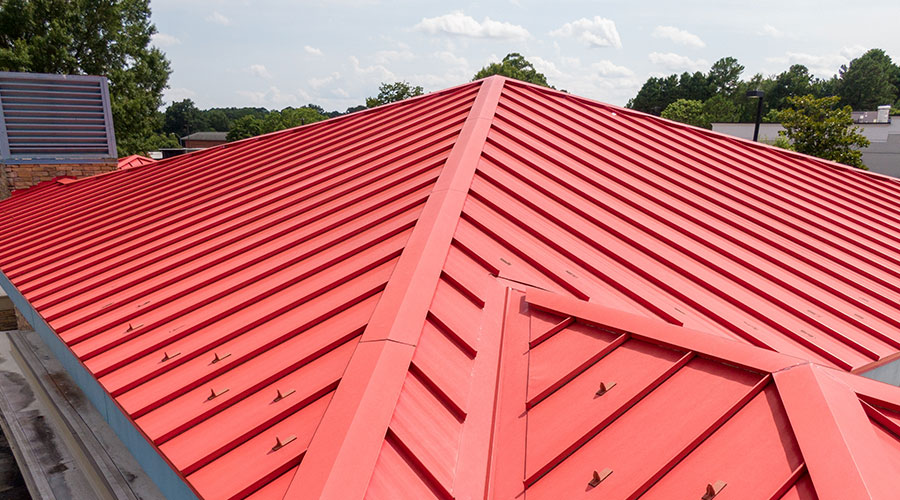Infrared Imaging: Detailed Reports Provide Valuable Information
What do these changes mean for managers? In a word: empowerment. A decade ago, managers who needed infrared surveys had to find a qualified vendor and pay a premium price. The manager accepted the materials the vendor called a report, tried to make sense of it, and hoped the electrical and mechanical technicians fixed the right component based on the results. Rechecking the survey's results meant calling back the vendor and writing another check. The entire process was out of the manager's control, and it cost a bundle. Not anymore.
Contractors who provide infrared-imaging services remain valuable assets, given the experience they gained in using the technology. But instead of being simply bystanders, managers now participate in and control the process. Many departments have thermographers who handle infrared imaging in-house, making it easier for managers to incorporate infrared technology into their maintenance programs.
Advances in technology now make it possible for the value of infrared thermography to penetrate much deeper into departments and their activities than ever before. The impact of infrared imaging is similar to that of computerized maintenance management systems (CMMS), which have made tracking asset data much easier in recent years. Instead of pulling a dusty binder from a shelf, a manager can open a CMMS database and review inspections, verify technicians have made repairs, and even determine if technicians have conducted post-repair inspections.
Software for infrared-imaging systems also has evolved greatly. Analysis now can consist of multiple temperature data points within one image, overlay of isotherm palettes to highlight bands of temperature, and correction factors for surface emissivity and reflected background temperature.
These changes mean the information contained in a report gives managers more insight and value. Thermographers can easily generate reports and convert them into electronic formats for distribution to managers, facility executives, and outside consultants. In an environment where justifying equipment purchases is extremely difficult, the adage of a picture being worth a thousand words can pay dividends for managers trying to push for funds.
With camera prices at an all-time low, it is also possible for each facility to have one of its own imagers for follow-up inspections after repairs, making it possible to conduct spot-checks of refrigerant or chilled-water flow, detect moisture in roofs and building envelopes, and a perform host of other tasks that were not possible a few years ago. With minimal coordination, follow-up inspection images taken by technicians can support vendor-supplied data to give a deeper, more comprehensive view of a facility's overall health.
Dave Sirmans, CMRP, is an instructor and consultant with the Snell Group. He previously worked in reliability as lead engineer in an electrical-testing company, where he developed and implemented NFPA 70E compliance for infrared inspections.
Infrared Technology: One User's Journey
My first exposure to infrared technology came from my time in the U.S. Navy in the late 1980s.
The anti-submarine warfare aircraft was equipped with the AN/AAS-36A infrared detection system (IRDS) for passive scanning of ocean surfaces while hunting enemy submarines. I first saw the IRDS in 1988, and thought it was 1950s technology, but it worked well. The units displayed objects of differing temperatures in various shades of gray, with dark meaning warmer and light meaning cooler. Since most watercraft are warmer than the water in which they float, the system got the job done.
Fifteen years later, I used an ISI 2000 thermal imager, which was a huge step up from the IRDS. I did not have to pan to refresh the image, it did not require liquid nitrogen or argon, and it was compact. I could carry the unit around for an hour or two without needing an ice pack. Never mind the fact that to save an image, the user had to lug around a video cassette recorder in a bag, or that in order to spend four-six hours performing an inspection, the user had to wear a 20-pound belt containing batteries.
Jump to January 2011. I recently spent the better part of two days inspecting electrical and mechanical equipment in a facility. The camera I used for that inspection weighs 4.5 pounds, has an uncooled, 320x240, focal-plane-array detector that can differentiate hundredths of a degree on surfaces 20 feet away.
Its secure-digital memory card can save hundreds of images, and the user can record voice notes to include with each image file. It has a spatial resolution that allows detection of thermal anomalies as small as 1 square inch at more than 15 feet.
To best illustrate the evolution of this technology, consider this: the cost of one IRDS system was more than I earned in eight years in the Navy. The camera I used on this recent project costs less than my son's first semester in a state college.
— Dave Sirmans |
Related Topics:








